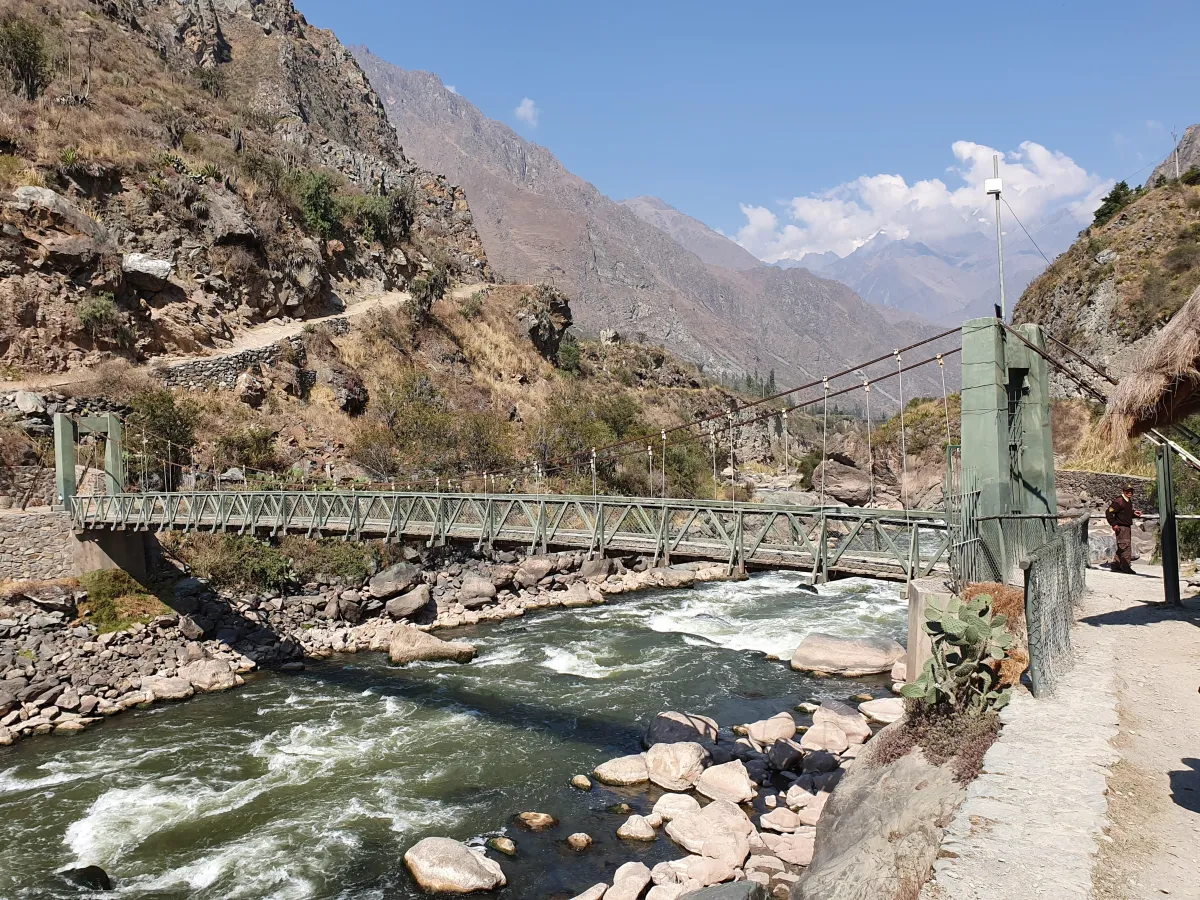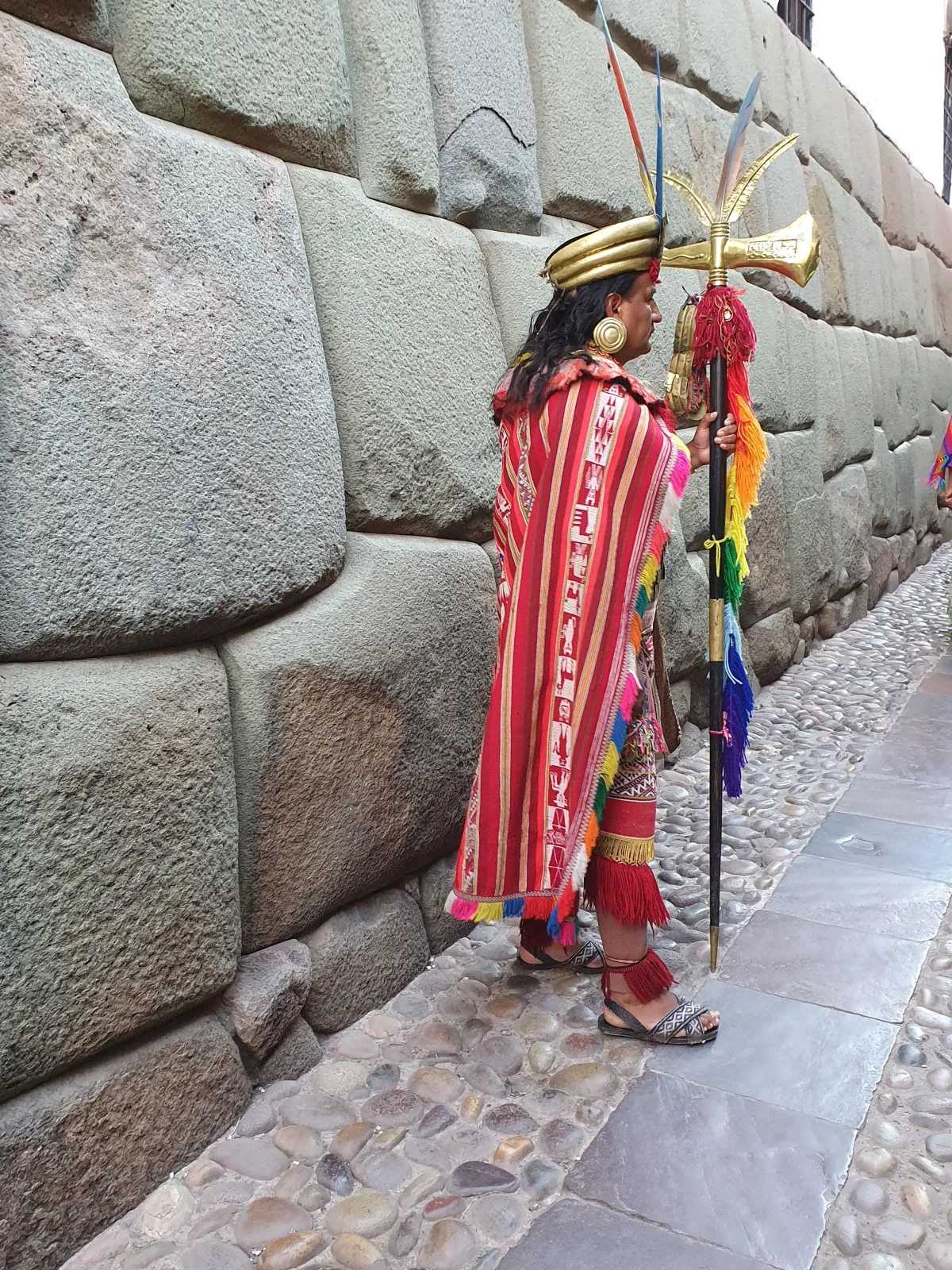A Transformational Adventure
THE INCA TRAIL & RAINBOW MOUNTAIN
The Inca Trail & Rainbow Mountain
Difficulty Level 4-5
The Inca Trail &
Rainbow Mountain
Difficulty Level 4-5
The Inca Trail
The Inca Trail is a total of 45 km, with the first 40km spread over the first 3 days, so you need to be able to hike up to 16km in one day and you need to be able to hike for 4 days in a row.
Rainbow Mountain
This is a one-day hike, but it's steep and at high altitude - by now, you will also be tired.
Physical Fitness
Although you certainly don't need to be an athlete, these hikes are a major challenge and while it's achievable for anyone with a 'reasonable' level of fitness, you will enjoy it more if you're well prepared.
The pace of your ascent coupled with good acclimatization will help you on the hikes but it is essential to be mentally and physically prepared before you start. That's where the benefits of the pre-trip coaching will give you a massive advantage.
Regular hikes are one of the best ways to prepare, increasing frequency and length, as you get closer to the trek. All aerobic exercises including cycling, running and swimming are good for strengthening the cardiovascular system. Include uphill and downhill training and, if you live in a flat area, use a treadmill and or stairs. Hiking up and down hill is very different from hiking on the flat.
Generally, any exercise that increases the heart rate for 20 minutes is helpful but don’t over do it just before the climb.
Altitude and Acclimatization
The effects of altitude can't be ignored.
Altitudes are generally defined as follows:-
High altitude 2,400m – 4,200m
Very high altitude 4,200m – 5,400m
Extreme altitude above 5,400m
Cusco is situated at 3,400m and many people feel the effects as soon as they arrive.
Ollantaytambo is 2,792m so you will feel better after we get there from Cusco.
The highest point on the Inca Trail is Dead Woman's Pass at 4,215m while Machu Picchu itself is only 2,400m
Rainbow Mountain is 5,200m, so this is the highest elevation of our trip and takes us into the 'very high altitude' zone.
The pace of the hikes is very slow giving you lots of chance to catch your breath. It's also essential to drink plenty of water - at least 3-4 litres per day.
During the trek it is likely that all climbers will experience at least some form of mild altitude sickness. It is caused by the failure of the body to adapt quickly enough to the reduced level of oxygen in the air at an increased altitude. There are many different symptoms but the most common are headaches, light-headedness, nausea, loss of appetite, tingling in the extremities (toes, fingers) and a mild swell of ankles and fingers.
If you have severe symptoms, the only solution is to descend until your symptoms go away completely. Medicines that may be used to prevent or treat the symptoms of severe high-altitude illness include acetazolamide and nifedipine.
Don't ignore signs of altitude sickness. While it's normal to experience mild symptoms, more severe cases can be fatal. When you have signs of altitude sickness, speak to your guides and let them know. If your symptoms are severe, don't go higher until you feel better.
It's impossible to prepare for the effects of altitude - everyone is affected differently and it has nothing to do with how fit you are. Always follow the advice of your guides. If they tell you to descend, you must do as they say. There is no shame at all in turning back due to severe altitude sickness. You can hold your head high by simply taking the challenge.
The first objective is to stay safe and well. The second objective is to enjoy the journey. Reaching the summit (especially at Rainbow Mountain) is the last objective and an added bonus.









The Inca Trail
The Inca Trail is a total of 45 km, with the first 40km spread over the first 3 days, so you need to be able to hike up to 16km in one day and you need to be able to hike for 4 days in a row.
Rainbow Mountain
This is a one-day hike, but it's steep and at high altitude - by now, you will also be tired.
Physical Fitness
Although you certainly don't need to be an athlete, these hikes are a major challenge and while it's achievable for anyone with a 'reasonable' level of fitness, you will enjoy it more if you're well prepared.
The pace of your ascent coupled with good acclimatization will help you on the hikes but it is essential to be mentally and physically prepared before you start. That's where the benefits of the pre-trip coaching will give you a massive advantage.
Regular hikes are one of the best ways to prepare, increasing frequency and length, as you get closer to the trek. All aerobic exercises including cycling, running and swimming are good for strengthening the cardiovascular system. Include uphill and downhill training and, if you live in a flat area, use a treadmill and or stairs. Hiking up and down hill is very different from hiking on the flat.
Generally, any exercise that increases the heart rate for 20 minutes is helpful but don’t over do it just before the climb.
Altitude and Acclimatization
The effects of altitude can't be ignored.
Altitudes are generally defined as follows:-
High altitude 2,400m – 4,200m
Very high altitude 4,200m – 5,400m
Extreme altitude above 5,400m
Cusco is situated at 3,400m and many people feel the effects as soon as they arrive.
Ollantaytambo is 2,792m so you will feel better after we get there from Cusco.
The highest point on the Inca Trail is Dead Woman's Pass at 4,215m while Machu Picchu itself is only 2,400m
Rainbow Mountain is 5,200m, so this is the highest elevation of our trip and takes us into the 'very high altitude' zone.
The pace of the hikes is very slow giving you lots of chance to catch your breath. It's also essential to drink plenty of water - at least 3-4 litres per day.
During the trek it is likely that all climbers will experience at least some form of mild altitude sickness. It is caused by the failure of the body to adapt quickly enough to the reduced level of oxygen in the air at an increased altitude. There are many different symptoms but the most common are headaches, light-headedness, nausea, loss of appetite, tingling in the extremities (toes, fingers) and a mild swell of ankles and fingers.
If you have severe symptoms, the only solution is to descend until your symptoms go away completely. Medicines that may be used to prevent or treat the symptoms of severe high-altitude illness include acetazolamide and nifedipine.
Don't ignore signs of altitude sickness. While it's normal to experience mild symptoms, more severe cases can be fatal. When you have signs of altitude sickness, speak to your guides and let them know. If your symptoms are severe, don't go higher until you feel better.
It's impossible to prepare for the effects of altitude - everyone is affected differently and it has nothing to do with how fit you are. Always follow the advice of your guides. If they tell you to descend, you must do as they say. There is no shame at all in turning back due to severe altitude sickness. You can hold your head high by simply taking the challenge.
The first objective is to stay safe and well. The second objective is to enjoy the journey. Reaching the summit (especially at Rainbow Mountain) is the last objective and an added bonus.










Your Guide to Name & Conquer Your Mountains
• SOUND MARKETING & CONSULTING LTD - COPYRIGHT © 2023 - ALL RIGHTS RESERVED •